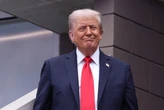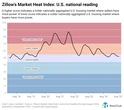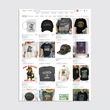As the creator economy continues to grow, brand trips have become a staple marketing strategy for consumer-facing brands, and B2B firms are starting to do the same.
Adobe Express hosted a Summit in New York City for 46 creators. As an Adobe Express ambassador, I attended this summit, which focused on marketing and business, covering travel accommodations and offering early product updates, feedback sessions, and networking opportunities. Similarly, Semrush hosted an influencer weekend in 2024 for nearly a dozen creators in London paying for their travel, meals, and experiences.
Just like their consumer-focused counterparts, these B2B companies hope hosting creators at exclusive events will lead them to speak highly of the brand, earn them positive coverage, and act as a source of real-time feedback.
The big difference with B2B creators is that purchasing decisions in the workplace are often costly. As a result, there is a more nuanced and complex consideration. Brand trips are an emerging tactic in the B2B space. Here’s how companies are doing it, the outcomes they’re driving, and the lessons that we can learn from companies hosting them.
Why brand trips for B2B creators are gaining popularity
The creator economy is expected to exceed, $2.71 trillion in revenue by 2037, according to Research Nester. This is because many influencers have become trusted voices who drive sales, even in complex B2B buying cycles.
Opportunities for a brand to connect with relevant creators in person are a way of earning face time and introducing them to the team and product line. It also provides them with motivation and ways to collaborate, as well as hearing feedback from opinionated supporters. Nicole Ponce, Influencer Marketing Team Lead at Semrush says, “There’s been a noticeable shift where B2B brands are adopting B2C-style engagement tactics, and brand trips are one of them.”
Substack and LinkedIn—where I teach marketing development and career development courses—have noticeably prioritized creators, encouraging everyone from CEOs and executives to industry experts and emerging voices to share content consistently.
“As LinkedIn is growing, B2B creators are starting to be a group of folks you can’t ignore, especially if your product is looking to target the B2B space,” says Kate Olmstead, Adobe Express Community & Ambassador Programs Lead.
“Five years ago, we didn’t have this concept, really of top voices in marketing. LinkedIn creators with 250,000 followers, speaking to the likes of CMOs and VPs of marketing,” says Olmstead.
How to create a B2B brand trip where both sides benefit
Establish what the focus of the event is, whether it’s the launch of a new product, a discussion on industry trends, or a celebration of a major milestone. “It depends on the event, but typically we’ll incorporate either a demo, product insight, or a workflow preview to spark interest. Sometimes it’s through more curated, two-way conversations, where we share what’s launching and invite feedback from creators about what they need or see missing in the market,” says Ponce.
Typically, companies cover the creator’s travel accommodations, meals, and experiences in exchange for the creator posting on social media. Neither Adobe nor Semrush required posting to attend, which likely removed pressure for participants (who are likely to share on their own if they enjoyed the event).
Olmstead says that Adobe’s trip aimed to introduce like-minded creators, offer early exposure to new features, and provide a forum for candid feedback. What also likely helps the creators buy in is the association with a big, well-known brand like Adobe. This boosts their careers as influencers and also provides the opportunity to network with others and the chance to stay in an appealing city for free.
Invite creators based on relevance and consistency over reach
Inviting a mix of creators across platforms, titles, career paths, and audience sizes can help ensure there’s interesting conversation as long as there’s a set of shared interests.
“I personally look at whether they create highly engaging, high-quality content and whether their audience is one that our brand wants to be associated with. But it’s not just about reach or follower count. We also look at how much value they bring to the room—and I mean that literally,” says Ponce.
“We try to curate a space that fosters meaningful, peer-to-peer conversations. So we intentionally balance different expertise levels—for instance, having a content marketing specialist alongside someone who focuses on paid advertising,” she added.
Create balanced programming that’s educational and entertaining
While it’s important that the brand benefits from hosting a group of creators, it’s important not to make the agenda too self-promotional or jam-packed. There needs to be room for fun.
While the creator expects to learn about the company’s products, it’s also important to be clear on how the event benefits them. “You’ve got to have substance to [a brand trip], whether that be through the learning agenda, the educational content, or giving something back to them, in terms of bringing an industry expert that can help them level up their own businesses,” adds Olmstead.
Brand trips that strike the balance deliver qualitative outcomes like the attendees leaving with a positive impression of the brand, as well as quantitative impacts like social mentions and reach. You might just find that your business benefits.











No comments